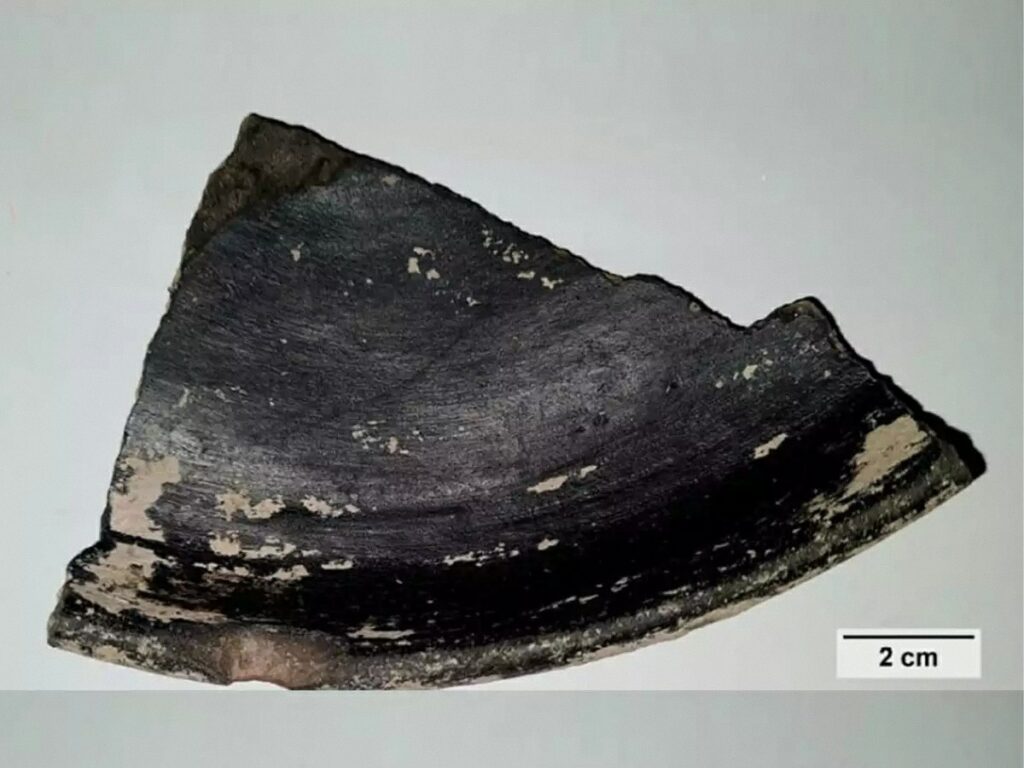In 2015, in a nondescript village some 450km from Chennai, India were found the remains of a city that went back to the 3rd-6th century BCE. Now, in broken pieces of pottery and artifacts from the excavation site, Keeladi, scientists have stumbled upon the world’s first known use of nanotechnology, over 2,600 years ago. The findings have been documented in a paper published in ‘Nature’ in November 2020.

“Before this, the oldest known carbon nanostructures were found in Damascus blades from the 16th-18th century CE,” corresponding author of the paper, Dr Nagaboopathy Mohan said. The Damascus blades (steel swords), in fact, were also made in India. “The technique for coating used in Damascus blades appears to have been known only to Indians,” Mohan added.
Before that, gold and silver nanoparticles were found in Islamic pottery from the 7th-8th century CE and in the Roman Lycurgus Cup from the 4th century CE. Moreover, a corrosion resistant azure pigment known as Maya Blue, first produced in the 9th century CE, was discovered in the pre-columbian Mayan city of Chichen Itza. It is complex material containing clay with nanopores into which indigo dye was combined chemically to create an environmentally-stable pigment.
Now, this great archaeological discovery in the small Indian village of Keeladi pushes the oldest known use of nanotechnology back by a thousand years.

Carbon nanotubes are tubes of carbon that are a billionth of a metre in diameter. Their occurrence was discovered in 1991 by Japanese scientist Sumio Iijima. Since then, researchers have come up with many ways to synthesise it. The most common method is chemical vapour deposition, Mohan explained, involving a complex process with high temperatures from 800°C.
So, when the researchers saw black coating on the pottery shards, they didn’t think they’d find anything extraordinary. “Actually, we expected to see an amorphous type signature — in layperson’s terms, a charcoal paste kind of coating,” Mohan said. But they saw a sophisticated technique close to “perfect.”

The paper said the average diameter of these nanotubes was found to be between 0.6 nanometre (a nanometre is one-billionth of a metre). The theoretical limit — a state in which a system is free of defects — is 0.4 nanometre.

“Practically, it is not easy to synthesise any material free of defect or close to its theoretical standard. Because there will always be local fluctuations in pressure, temperature, concentration etc involved in any synthesis process,” Mohan explained. “The diameter of carbon nanotubes found in Keeladi coatings, with diameter closure to the theoretical limit, validates the precise control over fabrication process and proof of mastery in that art.” That may be why the nanostructures survived for two and a half millennia.
“What makes the Keeladi pottery unique is that the coating has retained its surface stability and smoothness, surpassing time-bound wear and tear,” said Mohan. It is possible that plant-based materials were used which, when put through a firing process for pottery-making, reached temperatures that led to the formation of nanotubes. “But the exact fabrication and coating process is yet to be understood.”
Carbon nanostructures possess high strength and low weight, and are good conductors of heat and electricity. They are now being explored for use in electronic devices, sensors, transistors, batteries and medical equipment, among several other applications. In the Keeladi pottery shards, the black coating was on the inside. It opens up the possibility that while the settlement knew how to synthesise them, they may not have been aware of the effects.
“If these potteries were used for edible preparation, then the ancient civilisation might have been aware of the cytotoxic nature (human compatibility) of carbon nanotubes,” the paper said. “It is a reflection of the question, ‘were they aware of the toxicity?’. Because, till now, the toxic nature of carbon nanotubes is not properly known,” said Mohan.
“Present National policies do not easily give legal approval to use a material for domestic and edible purposes if its human compatibility is not defined clearly.” So, he added, the next thing to do would be understanding the purpose of this coating. “We may end up knowing something great about this ancient civilization.”



